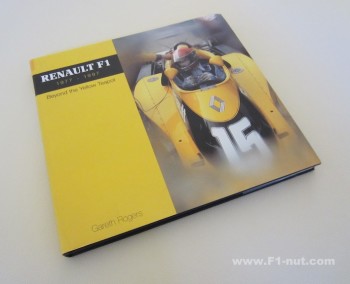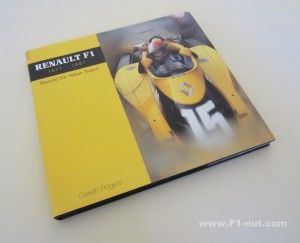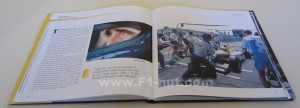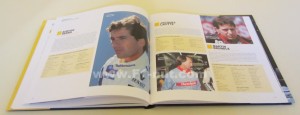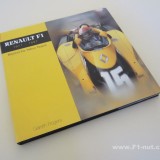
Book Review: Renault F1 1977-1997 Beyond the Yellow Teapot by Gareth Rogers
Positives
Negatives
Looking at the drivers and constructors championship ladder, it seems that Renault via Red Bull and Lotus are back to their best. Although Renault have been in and out of F1 as a works team, they have remained a dominant player as an engine supplier. Gareth Roger’s book “Renault F1 1977-1997 Beyond the Yellow Teapot” […]
Looking at the drivers and constructors championship ladder, it seems that Renault via Red Bull and Lotus are back to their best. Although Renault have been in and out of F1 as a works team, they have remained a dominant player as an engine supplier. Gareth Roger’s book “Renault F1 1977-1997 Beyond the Yellow Teapot” explores Renault’s first 20 years in the sport and their exploits as works constructor team and their success as a race engine manufacturer.
Gareth Rogers traces the early years of the black and yellow Renaults from the RS01, Jabouille and Arnoux pairing in ’78 and ’79, Prost’s arrival in ’81, turbo engines, supplying other teams including Lotus, Ligier and Tyrrell. Naturally, Williams features heavily due to their very successful partnership in the late 80’s and 90’s as does the Briatore/Schumacher/Benetton team. Rogers hasn’t gone into detailed review of each full season but focuses on a few of the major developments and driver stories for the year. So don’t expect a deep Autocourse-like commentary.
Chapter wise, Rogers covers each of the main Renault teams through the first 2 decades in typical history telling fashion. I find the rear section of the book more interesting with profiles of key Renault F1 management (yes, Flavio gets a mention), every F1 driver to have driven an Renault powered F1 car and their career statistics for Renault and finally chapters that detail all the Renault F1 statistics for the 286 Grand Prix raced up to 1997.
Much of the photography is from Renault own F1 archives so the book contains some excellent photos of the early Equippe Renault Elf cars. There are also photos from LAT Photographic and other sources. The photo layout composition is nicely varied with the book’s text, so it has a good flow when reading.
Physically, the book comes in a very compact and comfortable hardcover size with good page quality.
Overall, this is a very well balanced book that will definitely appeal to the early fans of the turbo Renaults and fans of French F1 pilots.
Wow Factor or Money shot: Not so much the photography but the Renault stats section at the back, particularly the statistical summary of RS1 to RS9 engines with comments from Bernard Dudot.
Suitable for: Turbo F1 fans, French F1 drivers and the general fan too.

